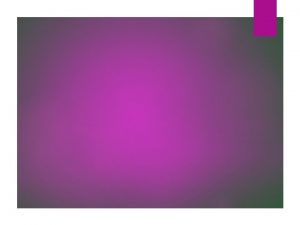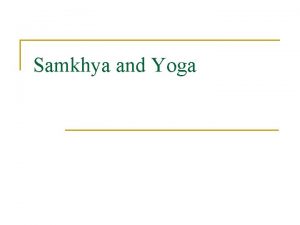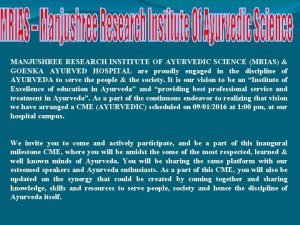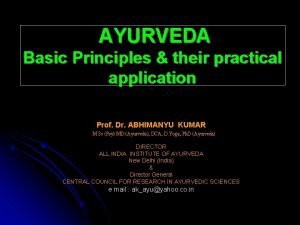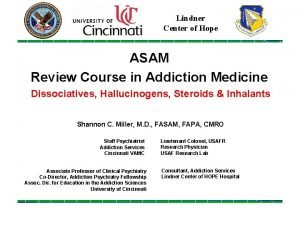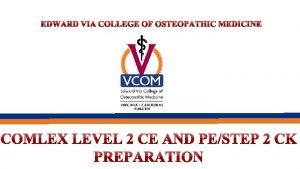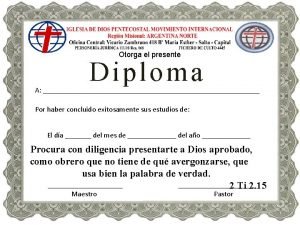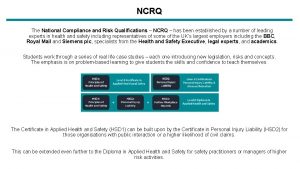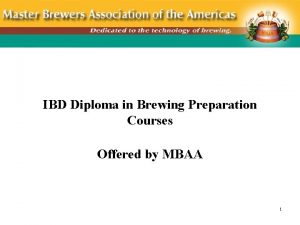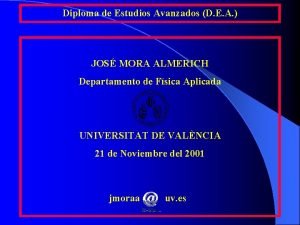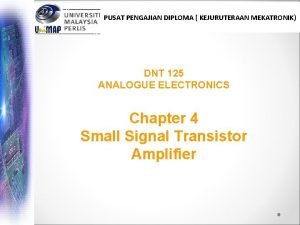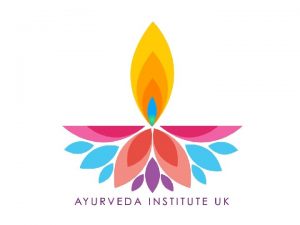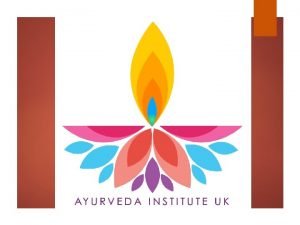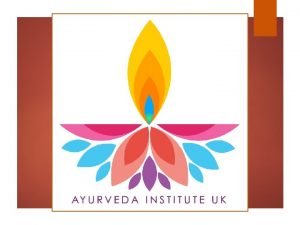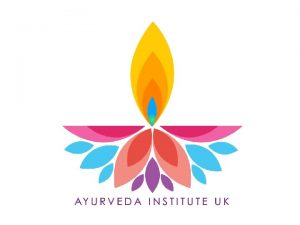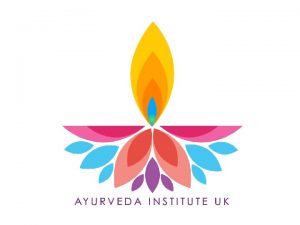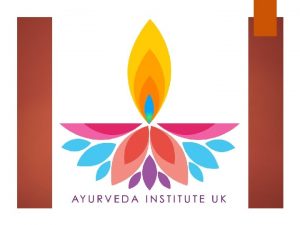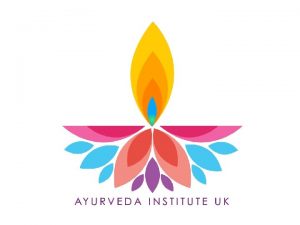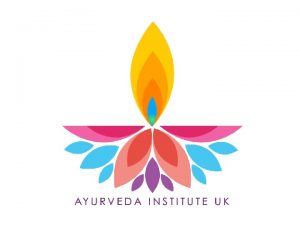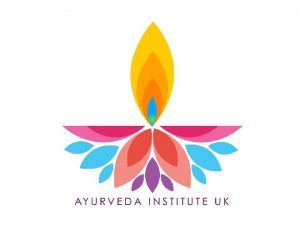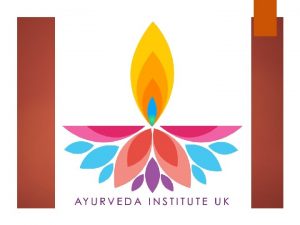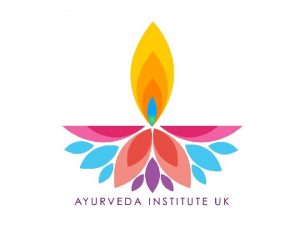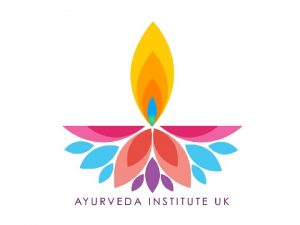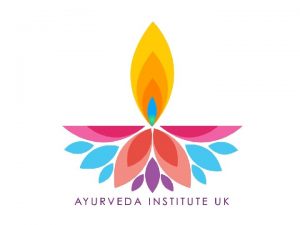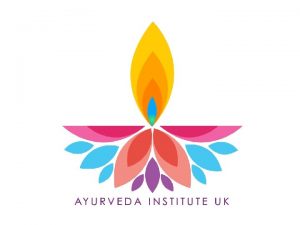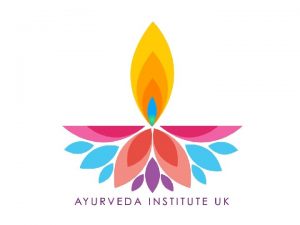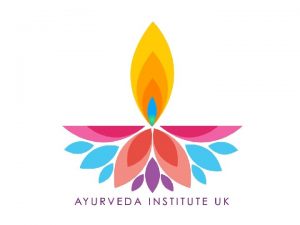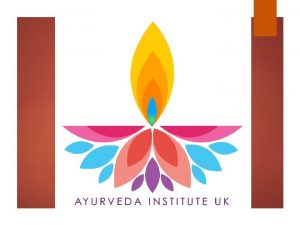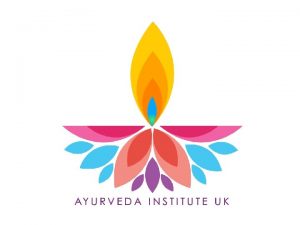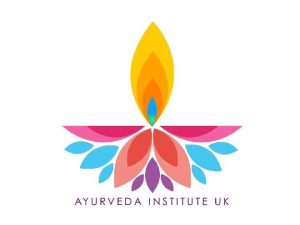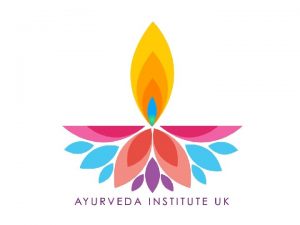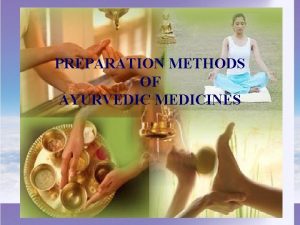DIPLOMA Ayurvedic Practitioners Course Review Samkhya Philosophy of















































































- Slides: 79


DIPLOMA Ayurvedic Practitioners Course Review

Samkhya Philosophy of Creation

Samkhya philosophy consciousness Prakruti Purusha Mahad Ahamkara Jeevathma Paramathma Mind Sattva Prajna Wisdom/ intuition Dhee Knowledge /learning Rajas Dhyana equilibrium Dhruti processing Tamas Samadhi bliss Smruthi stability Spiritual qualities Intellectual qualities Functions of mind

Sound Akasha (Ether) Physical body Vata Smell Vayu (Air) Vision Teja (Fire) v Taste Touch Consists ether and air qualities Pitta Consists fire and water qualities Kapha Consists water and earth qualities Apo (Water) Prithivi (Earth)

Body balance, imbalance and treatment Nature of constitution Imbalance Treatment Vata Tend to consume similar qualities like ether and air Over use of similar qualities can indulge more towards same qualities Use of opposite qualities like earth, water and fire qualities Pitta Tend to consume similar qualities like fire and water Over use of similar qualities can indulge towards same qualities Use of opposite qualities like air, ether, earth Tend to consume similar qualities like water and earth Over use of similar qualities can indulge more towards same qualities Use of opposite qualities like ether, air and fire Kapha

Dosha and Mahabuta

Vata Guna (attributes) • • dry light cold rough subtle mobile clear

Vata sites Generally the sites of vata are in • the colon • hips • ears • bones • skin The primary site is the colon

Vata Kriya – functions of Vata generally • • • Conception (bonding of ovum and sperm) Implantation Growth of foetus Inhalation & exhalation Creation of seven tissues (dhatu) Hearing Touch / touch sensation Stimulation of digestive fire Control of mental activities Stimulation and function of nervous system

Vata imbalances generally (examples) Aggravated Vata anxiety, insomnia, dry skin/eczema, weight loss Alleviated (or reduced) Vata chronic fatigue/ ME, excessive sleep, lethargy, depression Vitiated (or impaired/corrupted) Vata paralysis, motor neuron disease, dementia, bloating

Causes of Vata imbalances (hidden verse) cont. ØBlood letting ØProlonged exposure to loud music or loud sounds ØSuppression of natural urges such as hunger, thirst, urination, elimination, yawning, burping, flatulence ØAccidents, obstruction of marma points ØHorse riding ØExcessive fast travel (trains, planes and automobiles!)

Causes of Vata imbalances (hidden verse) cont. ØExcessive exposure to the sun ØExcessive meditation; isolation ØExposure to cold and windy conditions ØExcessive thinking; excessive sadness ØExcessive concentration; excessive exposure to electronic media (not in the original text!)

Symptoms of Vata imbalance § Hyperactivity § Involuntary body tremors § Involuntary rapid muscle movements such as rapid blinking § Cramps § Palpitations § Fatigue § Chills; poor circulation § Excessive talking; talking too fast

Symptoms of Vata imbalance cont. § § § § Feeling suffocated Tinnitus Bloating; fluid retention Miscarriage; infertility; light periods or loss of periods Lack of sperm Weak legs, dizziness Runny nose Stomach noises; difficulty in swallowing; dryness of throat; constipation

Treatment of Vata imbalances § Oleation (internal and external) - application and massage using warm oils § Sudation – mild sweating through exposure to sunlight or steam bath § Mild purification therapies (emesis and purgation – drinking ghee with medication or ingestion of triphala - moisturise the body) § Ingestion of foods which are sweet, sour and salty (mashed potato, broths, soups, butter, milk, creamy foods)

Treatment of Vata imbalances cont. § Warm oil bath (applying oil to the body before bathing) § Wrapping the body with clothes to encourage sweat § Threatening (stimulating treatments such as sudden loud noises or use of mantra) § Wine or tonics prepared from cornflour and jaggery (such as arishta for the body to warm up)

Treatment of Vata imbalances cont. § Oil based enema § Drugs of hot potency (in order to induce heat such as ginger or black pepper) § Comfortable activities such as singing, listening to light music, walks, parks, children, non-competitive activities


Pitta Guna (attributes) Oily (sasneha) Sharp or penetrating (tikshna) Hot (ushna) Light (laghu) Unpleasant in odour (visram; sour or fleshy smell) Mobile (sara; spreading as opposed to moving; not agitated) • Liquid (drava) • • •

Sites of Pitta • • • small intestine (primary site) stomach (primary site) digestive fire / acids sweat glands sebaceous glands

Sites of Pitta • • • lymph blood fat eyes skin

Pitta kriya – functions of Pitta • • • digestion absorption assimilation nutrition metabolism body temperature skin coloration the lustre of the eyes psychologically it arouses forcefulness, anger, hate and jealousy

Causes of Pitta imbalances Excessive consumption of: • sour, salty, pungent and astringent foods • foods which share pitta qualities (oily, sharp, hot, light, unpleasant in odour, mobile and liquid) • oily and heavy food • cooked food stored for long periods (from 24 – 48 hours) • hot drinks (temperature and quality such as caffeine, mint tea and green tea)

Causes of Pitta imbalances cont. Excessive consumption of: • red meat and red fish • consumption of two or more different types of animal protein simultaneously (cooked together) • root vegetables • raw vegetables and leafy greens • meat from wild animals • condiments such as vinegar, mustard and fermented sauces and pickles

Causes of Pitta imbalances cont. • Excessive consumption of alcohol (excessive demarcated by the physical response of the body) • Consumption of foods incompatible with each other (eg. fish and milk) • Eating meals too frequently or too many meals in a day • Eating while feeling anger, hatred or frustration • Sleeping during the day • Overly luxurious and hedonistic lifestyle

Pitta imbalances generally Aggravated pitta • • • migraines pitta type eczema and dermatitis infertility urine infections in the body acidity mouth ulcers inflammatory disorders auto-immune disorders such as rheumatoid arthritis, gout disorders of the mind include pitta type depression, schizophrenia, destructive and violent behaviours

Pitta imbalances generally cont. Alleviated (or reduced) pitta - chronic fatigue/ ME - fibromyalgia

Symptoms of Pitta imbalance Aggravated Pitta • increase in body temperature • craving for foods with pitta qualities (oily, sharp, hot, light, unpleasant in odour, mobile and liquid) • irritation of eyes • excessive sweating • increase in desire • hyperactivity • quick temper and frustration

Symptoms of Pitta imbalance cont. • night sweats • nightmares • uncontrollable feelings of desire, jealousy and being excessively goal orientated • excessive desire for luxury lifestyle and fear of loss of such lifestyle • feeling of dissatisfaction and depression • excessive self criticism and judgement • desire for control of food, activity, lifestyle

Symptoms of Pitta imbalance cont. Decreased pitta • decrease in body temperature • decrease in desires • lack of enthusiasm for life/ lethargy • suicidal tendencies

Treatment of Pitta imbalances • Consumption of foods with opposing qualities to pitta (oily, sharp, hot, light, unpleasant in odour, mobile and liquid) • Drinking medicated ghee • Purgation therapy (such as black cumin, triphala or dhatri) • Foods with sweet taste and cold potency • Intake of foods possessing sweet, bitter and astringent taste • Cool breeze

Treatment of Pitta imbalances cont. • Indulgence in perfumes which are pleasing, coolant and cordial • Wearing garlands and gems of similar nature on neck and chest (such as pearls or diamonds) • Walking in the park • Moonlight • Pleasant company of friends who are not controlling, small children, family • Being near water and playing in the water


Kapha • • the translation of Kapha is ‘biological water’ formed from the elements of earth and water primary element is water cements the elements of the body provides physical structure maintains body resistance responsible physiologically for biological strength

Kapha Guna (attributes) • • Oily (snigdha; unctuous) Cold (shita) Heavy (guru; dense) Dull (manda; slow or cloudy) Sticky (slakshna; gelatinous) Soft (mritsna; smooth) Firm (sthira; steady or stuck or static)

Sites of Kapha • • • The chest is the main seat of kapha lungs throat head sinuses Nose mouth tongue stomach joints, cytoplasm, plasma, and liquid secretions of the body such as mucous

Kapha Kriya – functions of Kapha • • • cements the body maintains body resistance or immunity lubricates the joints provides moisture to the skin helps heal wounds fills the spaces in the body gives biological strength vigour and stability support's memory retention gives energy to the heart and lungs responsible for calmness, patience and forgiveness

Causes of Kapha imbalances • • • lack of physical exercise indulgence in luxurious lifestyle sleeping in the daytime indulgence in food made of milk, fat and sugar eating starchy foods such as rice and potato eating meats such as pork and wild animal

Causes of Kapha imbalances cont. • excessive consumption of yoghurt and other fermented food • excessive consumption of raw fruit and vegetables • excessive consumption of ghee and palm syrup products • sedentary activities • insufficient stimulus for the mind • experiencing a lot of sadness, grief or attachment

Kapha imbalances generally Aggravated • diabetes • high blood pressure • artherosclerosis (cholesterol) • obesity • depression • lethargy • lack of energy • kapha type psoriasis • boils, tumours, fibroids, polycystic ovaries • recurrent chest infections, bronchitis, pneumonia, coughs, colds • kapha type arthritis, joint edema, fluid retention Alleviated • reduced immunity, longer healing time

Symptoms of Kapha imbalance Aggravated kapha • heavy body • greasy skin and hair • sticky or oily bodily fluids • feeling of greater gravity • joints and organs feel greater gravity • feeling cold and craving warmth • feeling like wearing wet clothes

Symptoms of Kapha imbalance cont. • • Lack of coordination between body and mind swollen edema drowsiness halitosis sweet, sour, salty taste in the mouth pale colour skin wasting time, taking a long time to do things

Symptoms of Kapha imbalance cont. Decreased kapha • dizziness • emptiness of joints • heart pains • dry skin • dehydration, constant thirst and perspiration, • insomnia • feeling defeated

Treatment of Kapha imbalances • vigorous physical activity (aerobic) • treatments which involve heat and increased perspiration such as saunas, sunbathing • taking astringent, pungent and bitter tastes • eating vata and pitta foods • detoxification treatments such as panchkarma

Treatment of Kapha imbalances cont. enemas emetic treatments exfoliating massage bitter tastes in food and decoctions such as wine and beer • exorcism • stimulating treatments using mantra or rituals • •


Rasa

Six main tastes Herbal energetics • The science of Herbal Energetics of Ayurveda recognises six main rasas (tastes): • Sweet = Madhura • Sour = Amla • Salty = Lawana • Pungent = Katu • Bitter = Tikta • Astringent = Kasaya

Rasa and the five elements cont. TASTE (RASA) PREDOMINANT ELEMENTS Sweet (madhura) Water + Earth Sour (amla) Water + Fire Salty (lawana) Earth + Fire Pungent (katu) Air + Fire Bitter (tikta) Air + Ether Astringent (kasaya) Air + Earth

The relationship between Rasa and Dosha Vata Dosha and Rasa. Aggravated by • Astringent, bitter and pungent rasas Alleviated by • Sweet and salty rasas

The relationship between Rasa and Dosha cont. Pitta Dosha and Rasa Aggravated by • Pungent, sour and salty rasas Alleviated by - • Astringent, sweet and bitter rasas

The relationship between Rasa and Dosha cont. • Kapha Dosha and Rasa Aggravated by • Sweet, sour and salty rasas Alleviated by • Bitter, pungent and astringent rasas

Guna

Attribute (Guna). Attributes Continuum Heavy and light Weight Cold and hot Temperature Oily/moist and dry Emollient Slow/dull and intense Intensity Stable and mobile Fluidity Soft and hard Rigidity Clear and sticky Adhesion Smooth and rough Texture Subtle and gross Density Solid and liquid Viscosity

Virya

Potency (Virya) • Virya = energy, potency or power of herbs • designated in Ayurveda as heating or cooling • produces the most basic energising effect on the system.

Vipak

Post-Digestive effect (Vipak) • The consequence of the change or action that a substance (dravya) undergoes in the human organism. • The six tastes are reduced to the three (sweet, sour and pungent) in their post digestive effect.

Post-Digestive effect (Vipak) • Sweet & salty tastes = sweet vipaka • Sour = sour vipaka • Bitter, astringent & pungent = pungent vipaka

Prabhava

Special Potency (Prabhava). • Beyond taste, energy and post digestive effect, herbs possess more subtle and specific qualities or uniqueness • Eg leadwort and wild castor have the same taste, post digestive effect and energy • Wild castor has a purgative property that leadwort doesn’t

Dhatu


Dhatu Nature Function (English) Rasa Plasma Preenana Nourishment Satisfaction Happiness Rakta Blood Jeevana Enduring life Mansa Muscle Lepa Covering Adhering Medas Fat Sneha Lubrication Asthi Bone Dharana Mjja Bone Marrow Purana Sukra Seminal fluid/reproductive element Garba Uthpadana Support Filling the cavity Production of embryo


Ama

Ama and its formation • Ama = toxins • Diminution of agni (agni mandya) = formation of ama • Ama then settles down in different parts of the body, for instance - lungs, heart or any visera. • Ama mixed with the doshas goes to the site of a manifestation of a disease, then signs and symptoms will manifest.

Rogi and Roga Pariksha

Rogi and Roga Pariksha Two types of examination: - Rogi Parisksha = examination of the patient - Roga Pariksha = examination of the disease - Rogi Pariksha requires examination of the patient as a whole person - Roga Pariksha requires diagnosis of the type of disease and the stage of the disease

Rogi Pariksha (examination of the patient) Diagnosis and treatment follows these three steps: • Pratyaksha (Direct observation) • Anumana (Inference) • Sabda (Authoritative statement)

Ashta vida Pariksha – eight-fold method i. Nadi Pariksha – pulse examination ii. Mutra Pariksha – urine examination iii. Mala Pariksha – stool examination iv. Jihva Pariksha – examination of the tongue v. Shabda Pariksha – examination of the eyes vi. Sparsha Pariksha – examination of the skin vii. Druck Pariksha – examination of the nails viii. Akruthi Pariksha – examination of the physical features

Ashta vida Pariksha Nadi Pariksha (New practitioners) • First consider the Prakruti (physical and psychic constitution of the patient) and the Vikruti (nature of the disease of the patient) • Predict pulse diagnosis • Take the pulse Pulse diagnosis can assist in indicating the patient’s: - constitution, - imbalance, - the nature of the disease and - the prognosis

Mutra Pariksha Urine for examination should be collected - in the morning - mid-stream - In a clear, glass vessel There are two stages to the examination of urine: • examination of the urine as it is • examination of the urine using oil drops

Mala Pariksha Two types of stool: • Stools with toxins (sama) = indigestion – Heavy, sticky, sink to bottom • Stools without toxins (nirama) = good digestion – Float, easily flushed, no stains, non-sticky, odourless, small pieces

Jihva Pariksha Healthy tongue • clean and pink • No/little coating • slight coating on the back of the tongue If all doshas are aggravated the tongue exhibits black and throny eruptions

The five therapeutics of disease In the treatment of disease the following aspects require examination: • Nidana (Etiology or cause of a disease) • Purva-Rupa (Premonitory and prodromal signs and symptoms) • Rupa (Actual signs and symptoms) • Upasaya (Therapuetic trials) • Samprapti (Pathogenesis)

The five causative factors of disease • Prajnaparadha (Intellectual blasphemy or misuse of intelligence) • Asatmyendriyartha Samyoga (Unwholesome contacts of senses with their objects) • Kala Parinama (Seasonal perversions and age) • Karma or Samskara (Causative factors) • Krmi (Germs and parasites)

Chikithsa (treatment system in Ayurveda) Shamana (pacifying) External Shastra (surgery) Ksharakarma (cauterize with alkali) Agni karma (cauterize with fire) Lepa (poultices) Shodhana (purifying) Internal External Internal Agnidipana Sneha Pana Amapachana Abhyanga Kshuth Shirodhara Thrut Swedana (steam Vyayama bath and pinda- Atapa Avagahana maruta Vajikarana (aphrodisiac) Rasayana (rejuvenating) Male , female infertility Impotency and libido Vamana (ematic) Virechana (purgation) Nasya (nasal Swastha parayana Maintain & prevention of health Ahara (dietary advice & nutrition)) 1. Sathmya (pathya- wholesome) 2. Asathmya (apathyaunwholesome) Vihara (lifestyle advice & counselling) Kayika – uthkshepana, apakshepana vachikayoga, mantra, sthotra, music irrigation) Vasti (enema) Raktamokshna (blood letting) Oushadha (medicines) Upashaya (therapeutic trials) Anupashaya (same qualities alleviate the disorder)
 Drive.google
Drive.google Samkhya
Samkhya Manjushree ayurved college
Manjushree ayurved college Ayurvedic theory
Ayurvedic theory Diploma in project management course outline
Diploma in project management course outline Crash course existentialism
Crash course existentialism National association of patent practitioners
National association of patent practitioners Medical practitioners assurance framework
Medical practitioners assurance framework Theatre practitioner
Theatre practitioner Ecd progress report
Ecd progress report Software engineering a practitioners approach
Software engineering a practitioners approach Association of independent insolvency practitioners
Association of independent insolvency practitioners Kimber dita for practitioners volume 1 download
Kimber dita for practitioners volume 1 download Tax practitioners association indore
Tax practitioners association indore Curbside management practitioners guide
Curbside management practitioners guide Unregistered health practitioners
Unregistered health practitioners Social business practitioners
Social business practitioners Australian college of nurse practitioners
Australian college of nurse practitioners Header bond t junction
Header bond t junction Course title and course number
Course title and course number Chaine parallèle muscle
Chaine parallèle muscle Kusum viswanathan
Kusum viswanathan Hbs eoc review
Hbs eoc review Asam review course
Asam review course California cpa regulatory review
California cpa regulatory review Allergy board review course
Allergy board review course Level 2 ce comlex course
Level 2 ce comlex course Stanford hci group
Stanford hci group Chapter review motion part a vocabulary review answer key
Chapter review motion part a vocabulary review answer key Ap gov final review
Ap gov final review Narrative review vs systematic review
Narrative review vs systematic review Traditional and systematic review venn diagram
Traditional and systematic review venn diagram Narrative review vs systematic review
Narrative review vs systematic review Ia resp diploma plan
Ia resp diploma plan Avinash college of commerce intermediate fee structure
Avinash college of commerce intermediate fee structure Ib diploma
Ib diploma Diploma de super papa
Diploma de super papa Lausd persistence award
Lausd persistence award What is aice
What is aice Se confiere el presente diploma
Se confiere el presente diploma Ncrq national compliance and risk qualifications
Ncrq national compliance and risk qualifications Project costing diploma
Project costing diploma Oktoberi diploma
Oktoberi diploma International skills diploma seal
International skills diploma seal Ibd diploma in brewing
Ibd diploma in brewing Dogwood diploma
Dogwood diploma Hkdse certificate issue date
Hkdse certificate issue date Grade 10 orientation
Grade 10 orientation Graduation office etsu
Graduation office etsu Immunology diploma
Immunology diploma Andalus diploma pengajian islam
Andalus diploma pengajian islam Pengajian al quran dan sunnah
Pengajian al quran dan sunnah Diploma in public accountability
Diploma in public accountability Aviation medicine diploma
Aviation medicine diploma Diploma fin curso
Diploma fin curso Dea diploma
Dea diploma American diploma project
American diploma project Btec level 3 extended diploma in performing arts
Btec level 3 extended diploma in performing arts Biology 30 diploma
Biology 30 diploma Obp hesaplama
Obp hesaplama Cache 3 diploma
Cache 3 diploma Pwcs advanced diploma requirements
Pwcs advanced diploma requirements Diploma mekatronik
Diploma mekatronik Grci course calendar
Grci course calendar Orvosi diploma honositasa magyarorszagon
Orvosi diploma honositasa magyarorszagon Otorga el presente reconocimiento
Otorga el presente reconocimiento Ib diploma requirements 2021
Ib diploma requirements 2021 Grade 9 diploma
Grade 9 diploma Online culinology diploma
Online culinology diploma Academica dual diploma
Academica dual diploma Diploma alquran dan sunnah
Diploma alquran dan sunnah Diploma in funeral arranging and administration
Diploma in funeral arranging and administration Diploma in funeral arranging and administration
Diploma in funeral arranging and administration Diploma in funeral arranging and administration
Diploma in funeral arranging and administration Diploma quran dan sunnah
Diploma quran dan sunnah Bergen katedralskole ib
Bergen katedralskole ib What is a scholar diploma
What is a scholar diploma Nostrification of high school diploma
Nostrification of high school diploma Baccalaureate diploma
Baccalaureate diploma European diploma in optometry
European diploma in optometry
